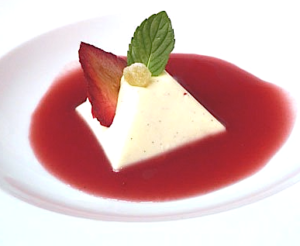For those who love mushrooms and want to experiment with more recipes here’s a slide show of different mushroom varieties and a quick description of each. When you are ready to cook your romantic meal for two, here arelinks to some of our favorite mushroom recipes:
Grilled Polenta with Gruyere Cheese and Mushrooms
Grilled Rib Eye Steak with Sherry Mushrooms
Mushroom + Fontina Cheese Lasagna
Mushroom and Leek Beggar’s Purse
Mediterranean Pasta with Grilled Mushrooms, Tomatoes, and Eggplant
The mushroom information found below was taken from the Mushroom Council Website.
White button. The most popular mushroom, white buttons represent about 90 percent of mushrooms consumed in the United States.They have a fairly mild taste and blend well with almost anything. Their flavor intensifies when cooked.
Crimini. Also known as baby ‘bellas or browns, criminis are similar in appearance to whites, but have a light-tan to rich-brown cap and a firmer texture. Criminis have a deeper, earthier flavor than whites.
Portabella. A larger relative of criminis, Portabellas have tan or brown caps and measure up to 6 inches in diameter. They have a deep, meat-like texture and flavor.
Shiitake. Shiitakes are tan to dark brown and have broad, umbrella-shaped caps, wide open veils, tan gills and curved stems that should be removed.They have a meaty texture and are rich and woodsy when cooked.
Enoki. Enoki have tiny, button-shaped caps and long, spindly stems.They are mild tasting and crunchy.
Maitake. Maitake appear rippling and fan-shaped, without caps. They are also called “Hen of the Woods.”Maitake have a distinctive aroma and a rich, woodsy taste.
Oyster. Oysters can be gray, pale yellow or even blue, with a velvety texture.Oysters have a very delicate flavor.
Beech. Beech mushrooms are petite with either all-white or light-brown caps. Beeches have a crunchy texture offering a delicately mild flavor that is sweet and deliciously nutty
Truffles. While nothing to look at truffles are a highly praised culinary ingredient. It has a smell similar to deep fried sundflower seeds or walnuts. Brillat Savarin called the truffle “the diamond of the kitchen” and praised its aphrodisiacal powers.
Wild Mushrooms. Some mushroom lovers enjoy searching the woods for prized wild varieties of mushrooms, such as morels, truffles and chanterelles. Because there are thousands of varieties of inedible and poisonous mushrooms, it’s important to never eat wild mushrooms without the guidance of a trained mycologist, or mushroom expert. Poisonous mushrooms often resemble non-poisonous mushrooms, so it’s best to purchase commercially grown mushrooms. If you want to try wild varieties, be sure you only eat those purchased from a trusted retailer or served in a restaurant.
How to Clean Mushrooms:
- Brush off any dirt with a damp paper towel or fingers.
- Rinse fresh mushrooms only briefly under running water and pat dry with a paper towel. Never soak them, as they absorb moisture.
- Trim the end of the stem before using.


